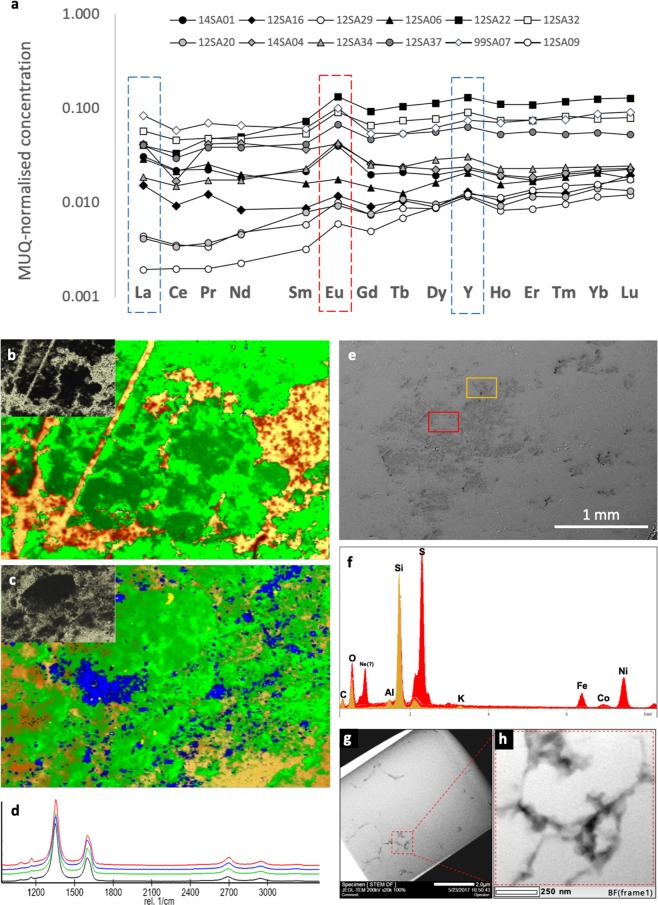Figure 2.
Selected geochemical analyses relevant to the palaeoenvironmental characterisation of the 3.33 Ga Josefsdal Chert. (a) REE+Y compositions of various samples from the studied horizons of the Josefsdal Chert normalised to Mud from Queensland (MuQ), a mixed mafic-felsic shale estimate of Archaean continental composition. HREE enrichment and positive La and Y anomalies indicates hydrogenous, thalassogenic contributions (marine), whereas positive Eu anomalies indicate hydrothermal fluid contributions. (b,c) Raman spectroscopy mapping of a representative irregular clot (b) and carbon-impregnated volcanic particle (c). Inset optical images show the regions of analysis; field of view = 1 mm. Green = carbonaceous material; yellow-orange = quartz; blue = anatase. Anatase can be considered a proxy for the alteration of volcanic particles associated with carbonaceous material. (d) Average Raman spectra for carbonaceous material in four studied samples (99SA07, black; 12SA09, green; 12SA16, blue; 14SA01, red). (e,f) SEM-EDS analyses of non-silicified mineral phases associated with carbonaceous material. Spectra are colour-correspondent to points within the regions of analysis shown. Red spectra = Ni-rich pyrite; beige spectra = K-Al phyllosilicate. Extensive SEM-EDS analyses are shown in Figs. S4-S8. (g,h) TEM micrographs from within clotted microstructures (sample 99SA07) showing the discontinuous distribution of carbonaceous material (black) within the microquartz matrix (grey).

